On the Hunt for Paisley Shawls
We really don’t know what kind of shawl Augusta, or her mother, used when travelling. Most likely, they had large, dark, wool shawls to keep warm. Where they locally produced or imported?
In the 1800s, shawls with paisley pattern was the fashion. The shawls were large and multicolored. No artist can beat the Belgian painter Alfred Stevens (1823-1906) in rendering the beautiful Paisley shawls of fashionable women in Belgium and France during the later half of the 19th century:
The original shawls with the buta design were Kashmir shawls, hand-woven in Kashmir with Cashmere goat wool. They were expensive and had to be imported. The invention of the Jacquard loom made it possible for Europeans to produce similar shawls. The Scottish town of Paisley became the center for this industry, and gave name to the droplet, leaf design. The National Museum of Scotland, located in Edinburgh, has a nice collection of early Paisley shawls and designs:
Now that Kerstin and I have made our 1850s dresses, we need shawls. So how would one be able to get an antique, Paisley shawl? One could be lucky, like blogger Beauty_for_Ashes, and stumble upon one at an antique mall (and the blog is hilarious), but that is rare.
But we were equally lucky. Our aunt Eva, who had followed Augusta’s Journey, called us one day and asked if we wanted some old nightgowns, lace, ribbons, and an old shawl that she had inherited from two of her aunts. Within a week, the package arrived by mail – and it contained a Paisley shawl from the mid-1800s!!! I don’t think we even realized at first what a treasure this shawl was. Of course, we don’t know that this one was made in Scotland, but it is antique and has the distinctive paisley pattern. After consulting with an expert, we decided that it would be OK to divide it into two shawls, so we each get one. Kerstin is now lining it with thin fabric so we can mend it where the threads are weak.
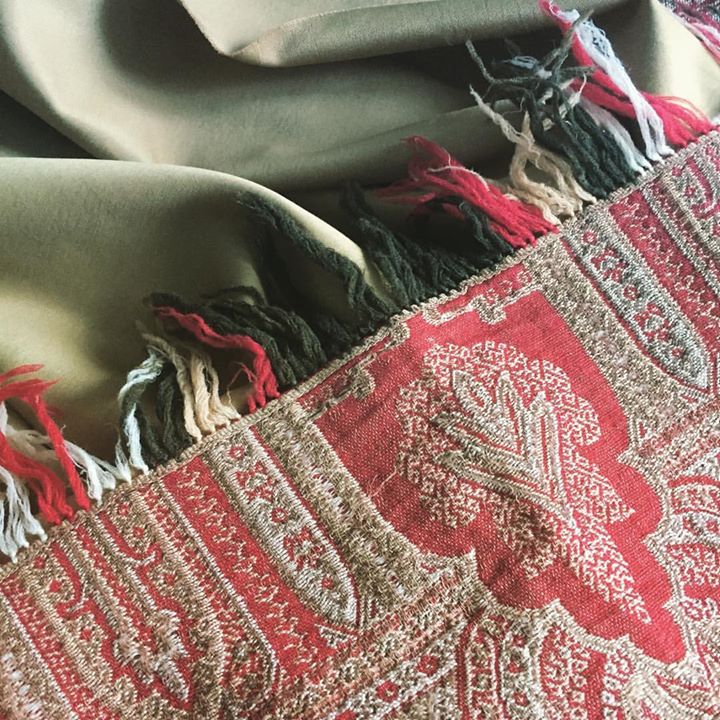
Mid-1800s Paisley shawl. Photo credit: Kerstin Melin.
But maybe we should also have some additional scarves. As I was going to be in Dubai for a while, I decided to check out the shawl market. The first week, we made a trip to Sohar, Oman, and found a traditional, Kashmir store. The manager was from Nepal and showed me the various qualities and styles. I settled on a large, red, machine-embroidered, square shawl in a blend of cashmere wool and cotton.
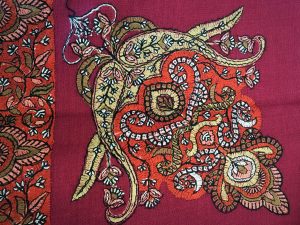
My Kashmir shawl from Oman
Now I needed a green shawl and it had to be the right green color for my dress made out of thrift-store, green-and-white curtains. Back in Dubai, I figured the best place to find one would be around the old Gold Souk in Deira. This is one of my favorite places in Dubai, and especially late in the evening: the myriads of people from all over the world – Asia, Africa, Europe, America – crowding the sidewalks under blinking neon lights, maneuvering around the plastic chairs and tables of chicken and shawarma restaurants, and side-stepping delivery push-carts. And the sounds: music streaming from air-conditioned souvenir stores, the latest Arabic love songs from street cafés, and the singsong message of those pesky street vendors who descend on tourists – “Pashmina, handbags, watches, Gucci, Louis Vuitton, …” I wave them off before they have finished their rant of famous fashion brands.
We are getting closer to the actual entrance to the Gold Souk, and I have yet to see a shawl that is of high quality or the right color. When the next street vendor starts his rant about pashmina, why not elicit his help? But honestly, what is pashmina? I had actually looked it up before going on my shawl hunt.
Pashmina refers to the finer fibers of the wool from cashmere goats local to Kashmir and Nepal. The courser fibers are called cashmere. The fine pashmina fibers can only be hand spun, so Pashmina shawls are all hand-made in Kashmir using hand-spun, 100% pashmina fibers. Cashmere shawls, on the other hand, are made with the courser, cashmere fibers and can be blended with other types of wool or fibers – such as silk. The fiber blend has to be stated; for example, 70% cashmere: 30% silk. So my Cashmere shawl from Oman was 50% cashmere: 50% cotton.
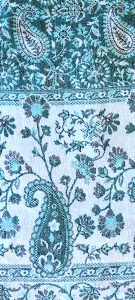
My green shawl
The street vendor gets excited and leads us into an alley with small Afghan shawl shops. This is his job – to introduce us to the shop keeper – and then leave. I tell the shop keeper what I am looking for and he shows me what I definitely don’t want – but, as a European, I am supposed to want.
As the communication is not working, I start digging in his piles of shawls with my dress-fabric sample as a color guide. I find a shawl that perfectly matches the color of the dress and it has a nice paisley pattern. But, of course, it is probably made of viscose or something similar. “Ma’am, this is 100% pashmina, best quality – you can wash it in machine!”
Well, if it was 100% pashmina, you would not be able to machine-wash it.
What is the price?
As customary, he shows me the price on a pocket calculator: 550 AED ($150) – are you kidding me! Azzeddine, my patient husband, asks me about my reservation price; I whisper “40 AED” – that is $12, the price I would be willing to pay at TJMAXX or Target in the US, or at Carrefour in Dubai, if they had the shawl.
The shop keeper tries to go half way – 250. He is not going to budge. Neither is Azzeddine. I show my lack of interest by walking out of the store. Azzeddine, still determined to get me the shawl, pulls out a 50 AED note and puts it on the counter with the body language signaling that either you take it or we leave. The shop keeper, without saying a word, reluctantly puts the shawl in a plastic bag and hands it over.
OK, $14 is still reasonable for a non-cashmere, non-pashmina shawl that has the right color and pattern. I am sure I could have had it for half the price if push came to shove.
And of course, as the weeks go by, I find other pretty shawls and scarves that I just have to buy. At least I am getting better at bargaining.
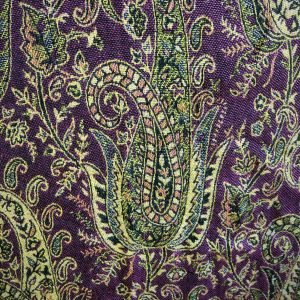
My purple paisley shawl
Which brings me back to Augusta: where did she buy her shawls? Were they imported? What did they look like? Does anyone in our large, extended family have one, or a reference to one?
We will keep digging, in letters and archives.
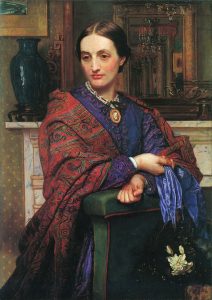
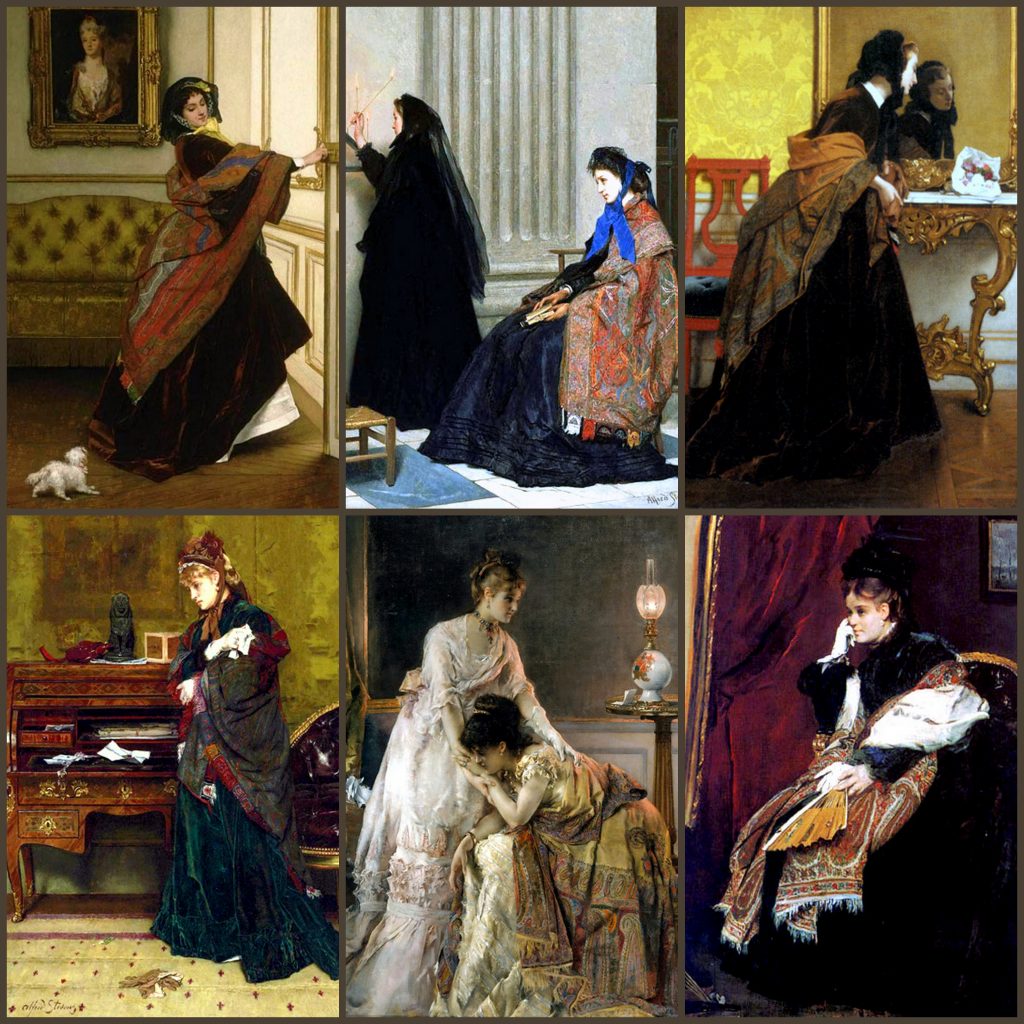
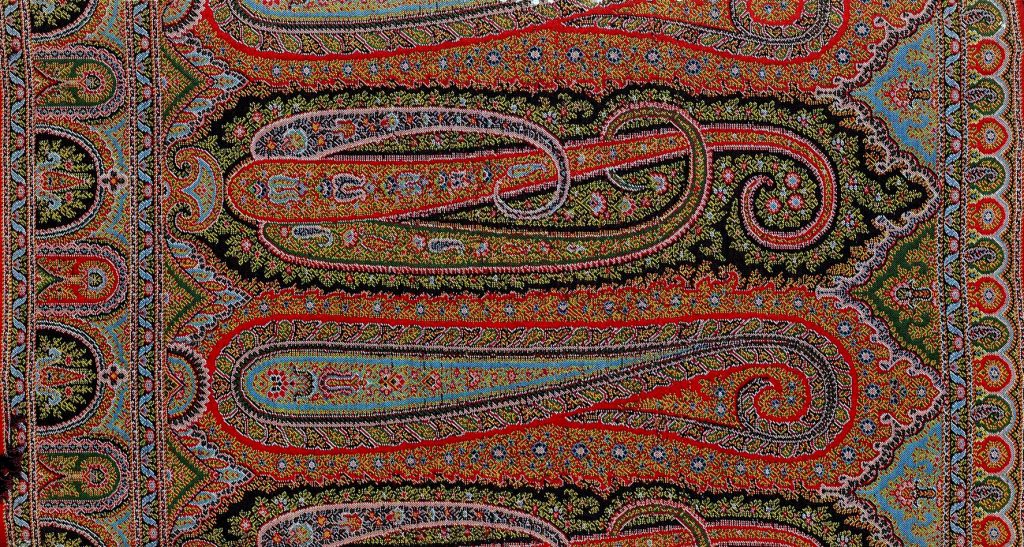
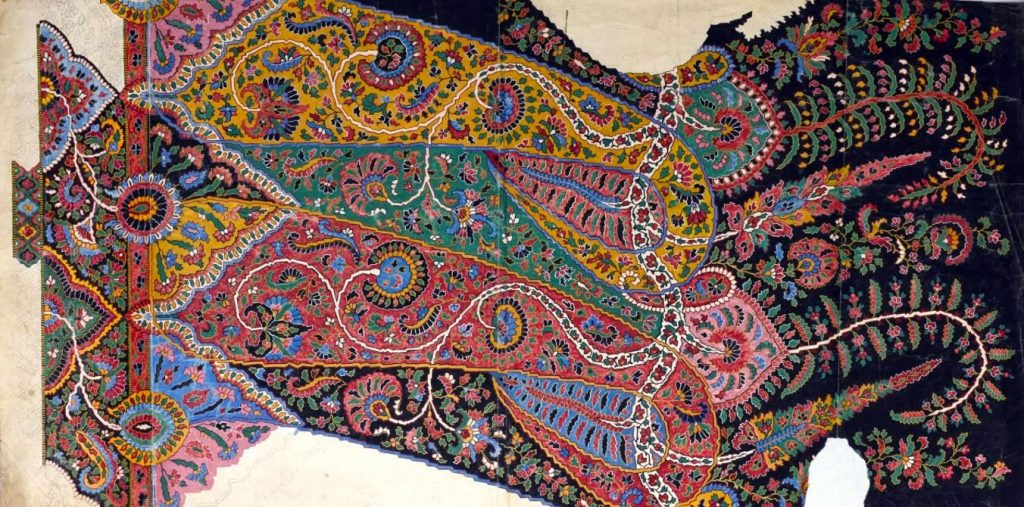

I think this is my favorite entry so far. I learned so much! Who knew that Paisley was Scottish?? And if Augusta was married to an Arab, I’m sure she would have also gotten her shawls at a quarter of the price too 🙂
I love your story from Oman and Dubai! You probably didn’t tell the shopkeepers about the Augusta project 😉 And how beautiful the pictures are in this blogpost!
Hello. The paisley shawl pictured in your fifth photo credited to Kirsten Meilin is exactly my shawl! Mine’s a bit more faded and has a hole in it but it was given to me by me Scottish uncle as a wedding gift. Do you have any more information about that type? Also I would like to clean it. Any recommendations would be appreciated. Thank you for your wonderful story. Deborah
Hi Deborah! That is so interesting! No, we don’t have any more information about that shawl. Regarding cleaning these shawls, I was told by a curator of old Kashmir shawls to wash them by hand using something called Quilt Soap. I think it is simply just pure soap (sodium lauryl sulfate).
Thanks again for your kind comments!
Sara